Introduction
The aviation industry is on the brink of a fuel revolution, with a shift towards Sustainable Aviation Fuel (SAF) as an essential and energy-dense renewable fuel. However, the adoption of SAF is not without its challenges, including significant modifications to global infrastructure and the need for blending with traditional jet fuels to achieve emissions reductions.
Despite these challenges, the Biden administration has set a goal to raise the production of sustainable fuel to meet 100% of the airline industry's jet fuel consumption by 2050. This transition towards SAF is crucial to meet the sector's goal of achieving net-zero emissions by 2050. Join us as we dive into the technical insights and analysis of the renewable fuels industry and explore the path to a more sustainable future for aviation.
Jet Fuel Composition and Standards
Jet fuel, a complex mixture of hydrocarbons, typically contains long-chain alkanes derived from petroleum sources such as crude oil or shale oil, with carbon chain lengths ranging from 8 to 16 carbon atoms. However, the aviation industry is on the brink of a fuel revolution.
The focus is shifting towards Sustainable Aviation Fuel (SAF), which has been identified as an essential and energy-dense renewable fuel. The adoption of SAF is not without its challenges.
The global infrastructure for aircraft fleets, airports, and fueling, much of which is underground, would require significant modifications involving substantial cost, time, and logistical considerations. Furthermore, SAF alone cannot achieve decarbonization.
It is often blended with traditional jet fuels, and only if the blend reduces emissions by a certain percentage, it is referred to as SAF. While SAFs can offset their carbon dioxide emissions, the process of making these alternative fuels may be related to carbon dioxide emissions, due to the energy required for their production or their impact on ecosystems.
In some cases, crop-based biofuels may produce more carbon dioxide emissions overall than fossil fuels. In a recent development, the Biden administration has set a goal to raise the production of sustainable fuel to meet 100% of the airline industry’s jet fuel consumption by 2050. This move will require fuel refiners to adopt new methods of producing jet fuel, each with its own set of trade-offs. In conclusion, while jet fuel has served the aviation industry well since the 1950s, the transition towards SAF is inevitable. This shift is essential to meet the sector's goal of net-zero emissions by 2050. However, the path to this transition is steep and requires a collective effort from the entire industry.
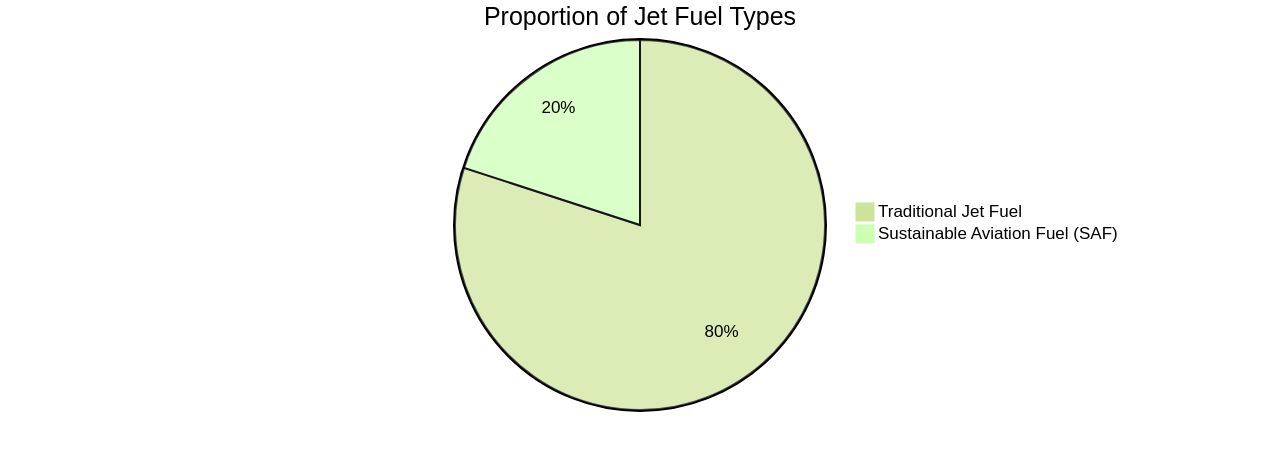
Types of Jet Fuel: Jet A, Jet A-1, and Jet B
Aircraft fuel types encompass Jet A, Jet A-1, and Jet B, which possess distinct applications in the aviation sector. The prevalent use of Jet A in the United States and Jet A-1 as an international standard is observed, whereas Jet B is primarily utilized for military operations and in colder climates.
However, the aviation industry's landscape is gradually changing due to the growing urgency to mitigate carbon emissions. The industry contributes around 2% to the global carbon emissions, creating an imperative need to develop greener fuel alternatives.
Sustainable Aviation Fuel (SAF) has emerged as a promising solution to this global challenge. Despite being three to five times more costly than conventional jet fuel, SAF is projected to make up the majority of the industry's climate progress in the forthcoming decades.
SAFs can comprise up to 50% of jet fuel mixes and are expected to account for 1.0 per cent of the jet fuel mix by 2026, gradually increasing to between 3.0 and 5.0 per cent by 2030. Notably, SAFs are considered a 'drop-in solution' for the aviation sector requiring minimal modifications to the existing aircraft and airport infrastructure.
However, Saf's current supply only makes up less than 0.2% of the global jet fuel supply, indicating a substantial gap that needs to be addressed. The adoption of SAF signifies a significant shift for an industry that has largely remained unchanged for the past 70 years. The idea of designing a new jet fuel introduces a steep learning curve for the aviation industry. However, with increased public and private investments, the production and use of SAF are expected to accelerate in the near future. The International Civil Aviation Organization has set a goal for the industry to achieve net zero carbon emissions by 2050, further highlighting the importance of SAF in the aviation industry's future.

Jet Fuel vs. Gasoline: Key Differences
Jet fuel and gasoline, although both originating from petroleum, are designed for different applications. Jet fuel, optimized to deliver high energy content and stability at extreme altitudes and temperatures, is crucial for aviation. The composition of jet fuel ensures it has a higher flash point and lower volatility than gasoline, enhancing safety in aviation operations.
On the other hand, gasoline is engineered for use in internal combustion engines. In comparison to diesel or natural gas, gasoline offers its own unique set of benefits and challenges. While diesel holds a higher energy content and flash point, the emissions produced during combustion raises concerns for air quality and health.
Natural gas, with a lower emission profile, is a cleaner-burning fuel but requires complex and costly infrastructure and storage. However, the aviation industry is witnessing a shift towards more sustainable solutions. Sustainable Aviation Fuel (SAF), a renewable, energy-dense fuel, is being seen as a crucial element in this transition.
SAF is not just environmentally friendly but is also compatible with existing jet engines, offering a promising alternative to traditional jet fuel. This shift is evident in recent developments, such as Virgin Atlantic's successful flight from London to New York using fuel made mostly from waste cooking oils and animal fat. This flight, which reduced carbon emissions by 70%, marked a significant milestone in the journey towards more sustainable aviation.
Despite these advancements, the production of SAF still has a long way to go. With the United States producing enough sustainable fuel to meet less than 0.2 percent of the airline industry’s jet fuel consumption in the past year, the transition to SAF presents a steep learning curve for the industry. However, the goal is clear - to achieve 100 percent SAF consumption by 2050, reducing carbon emissions and contributing to a more sustainable future.
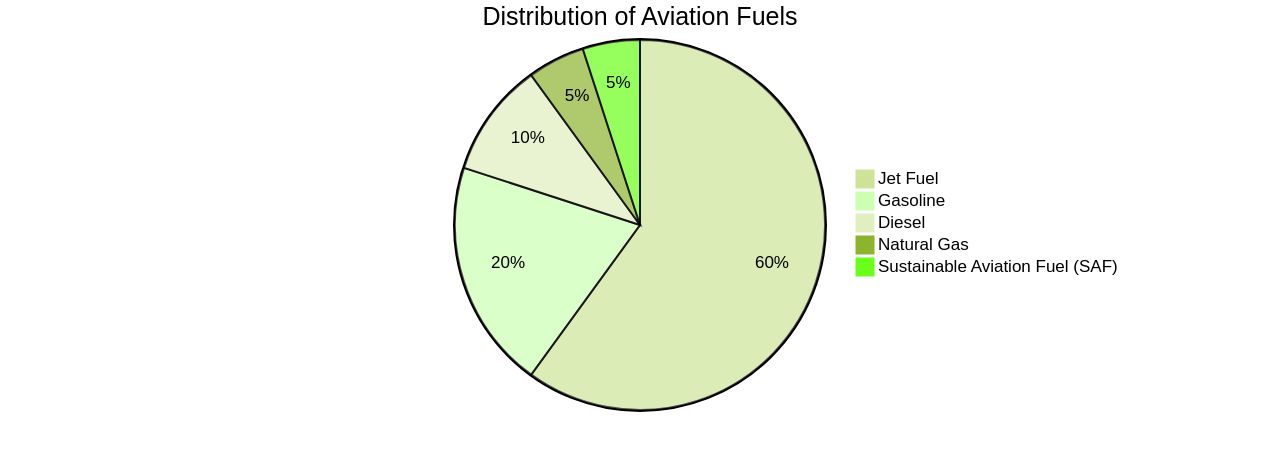
Cleaner Jet Fuel: A Growing Industry
The aviation industry, contributing to 2-3% of global CO2 emissions, is actively seeking greener alternatives to traditional jet fuel. Sustainable Aviation Fuel (SAF), derived from renewable sources such as biomass, waste oils, and hydrogen, appears to be a viable solution to decrease the aviation sector's carbon footprint.
SAF not only significantly reduces carbon emissions but also merges smoothly into the existing fuel infrastructure, necessitating minimal alterations to aircraft or facilities. Nevertheless, there are hurdles to surmount.
Despite the International Civil Aviation Organization's net-zero emissions goal for 2050, SAF technology is still in its infancy. Additionally, current SAF production barely scratches the surface of the global jet fuel supply, accounting for less than 0.2% in 2022.
The manufacturing process of SAF can add to CO2 emissions due to the energy required for production and potential effects on ecosystems. Therefore, it's vital for SAF production facilities to run on renewable energy to optimize net emissions reduction.
However, technological advancements such as Unifuel.tech's Flexiforming offer promising solutions. Flexiforming allows operators to regulate their decarbonization pace and can be implemented in an idle hydrotreater or reformer, thereby reducing capital expenditure and carbon intensity. Still, SAF is currently 3-5 times more expensive than conventional jet fuel, and its adoption may lead to an increase in airfare. Nonetheless, the environmental benefits and the capacity of SAF to fulfill up to 50% of the jet fuel requirement by 2030 position it as a significant contributor to the aviation sector's decarbonization. SAF is not a panacea and should be viewed as a stepping stone towards truly net-zero technologies. As the aviation industry continues to make progress with numerous test flights powered by 100% SAF, it remains crucial to investigate other promising alternatives such as e-fuels, hydrogen, and emerging technologies.
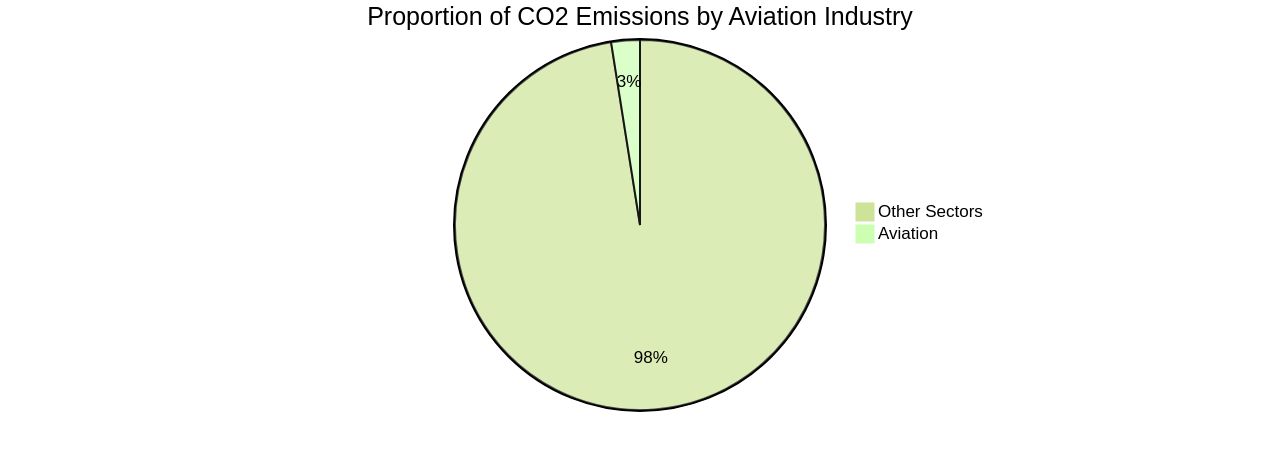
Sustainable Aviation Fuel: A Solution for Decarbonization
What kind of fuel is sustainable aviation fuel (SAF) that has become a significant player due to the aviation industry's quest to reduce carbon footprints? SAF, derived via multiple pathways, including the Fischer-Tropsch synthesis, facilitates the conversion of carbon-based feedstocks, such as biomass or waste oils, into liquid hydrocarbons, which is what kind of fuel jet fuel is a potential alternative for.
In the energy sector, Fischer-Tropsch synthesis, which is a flexible catalytic process, is making progress by allowing the production of a wide range of hydrocarbons, which are the essential elements of sustainable aviation fuel (SAF). What kind of fuel is jet fuel? What kind of fuel is jet fuel instrumental in generating, and is anticipated to considerably lower greenhouse gas emissions?
ORLEN and Yokogawa are partnering to expedite industrial-scale synthetic fuel production by employing a 'digital twin' of a production unit to fine-tune the process. A novel approach to SAF production involves the generation of electrofuel.
This method essentially incorporates carbon capture usage (CCU), employing fossil-free electricity and recycled carbon dioxide to manufacture aviation electrofuel. A facility planned near Forsmark, Sweden, intends to implement such a procedure by 2030.
Despite the promise of SAF, what kind of fuel is jet fuel currently makes up less than 0.2% of the global jet fuel supply and costs 3 to 4 times more than regular jet fuel. However, the evolution and large-scale production of SAF, which is a kind of fuel called jet fuel, is a critical step towards a sustainable future in aviation, with the potential to achieve CO2 emission savings of 89 to 94% through the PtL process.
In the quest to make SAF more accessible and cost-effective, Unifuel. Tech has developed a solution called flexiforming. This technology can be implemented in a dormant hydrotreater or reformer, thereby reducing capital expenditure and carbon intensity. To fully understand the application of flexiforming, operators can reach out to Unifuel. Tech with details about their feeds, target products, and existing facilities. Unifuel. Tech is committed to responding within 24 hours, further highlighting the company's dedication to facilitating the transition towards greener aviation fuels.
Health Effects of Jet Engine Emissions
Aircraft emissions, including carbon dioxide (CO2), nitrogen oxides (NOx), sulfur oxides (Sox), particulate matter (PM), and volatile organic compounds (VOCs), have potential implications for both environmental and human health. High levels of these pollutants, particularly in areas close to airports, contribute to air pollution and can adversely affect respiratory and cardiovascular health as well as overall air quality.
Recent studies have documented the adverse effects suffered by aircrew and passengers due to exposure to these pollutants. Symptoms include foggy thinking, dizziness, fatigue, impaired short-term memory, and cognitive thinking.
There have also been cases of neurological, respiratory, and cardiac complaints, with some studies linking these exposures to various types of cancer. Aside from the health implications, aircraft emissions also contribute to noise pollution, causing a range of effects from exhaustion and stress-related symptoms to anger and displeasure.
This is particularly problematic for individuals living under flight paths, where the noise from the aircraft can interfere with sleep and daily activities. Research has also shown that children exposed to high levels of air pollutants are more likely to develop symptoms of asthma and other respiratory infections. This can lead to increased school absences and other health-related issues. A project by the University of California, Davis, is currently investigating the effects of air pollution from recent wildfires on pregnant women and their babies. These findings underscore the importance of reducing aircraft emissions and improving the air quality in and around airports to protect the health and well-being of both the aircrew, passengers, and surrounding communities.

Toxicity of Jet Fuel Exposure
Jet fuel, a complex mix of hydrocarbons and additives, can pose a potential health risk depending on its specific composition, concentration, and the duration of exposure. Inhalation of jet fuel vapors or contact with the liquid form can lead to various symptoms such as respiratory irritation, dizziness, nausea, and skin irritation. However, the risk of toxicity is typically low in standard aviation operations due to stringent safety measures and regulations in place to minimize exposure.
Recent studies indicate that people living near refineries have elevated cancer rates. The Environmental Protection Agency (EPA) has faced criticism for approving a fuel component made from discarded plastic that was found to be extremely hazardous according to the agency’s own risk formula. This risk level is a million times higher than what is usually deemed acceptable for new chemicals and six times worse than the risk of lung cancer from a lifetime of smoking.
The aviation industry has also been scrutinized for its design flaw where the cabin air, unmonitored and unfiltered, comes from the engine area. This leads to the inhalation of toxic oils from the engine by those on board. Despite these concerns, it is crucial to note that the risk of toxicity is generally low in standard aviation operations, thanks to the rigorous safety measures and regulations in place to minimize exposure.
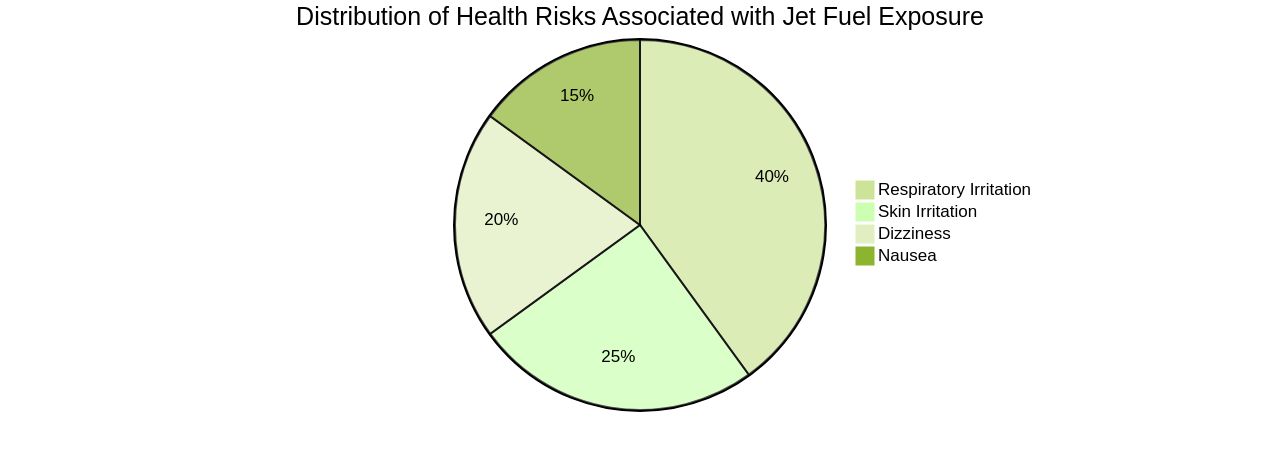
Characteristics of Jet Engine Emissions
The emissions from jet engines possess unique traits that set them apart from other emission sources. They contain a substantial volume of ultrafine particles, with sizes less than 0.1 micrometers. These particles can linger in the atmosphere for extended periods, potentially contributing to the creation of haze and smog.
Furthermore, jet engine emissions are typically released at high altitudes, which can significantly influence atmospheric chemistry and climate change. Recent studies underscored the complexity of atmospheric interactions with nitrogen oxides particles, which are emitted from aircraft engines. The research indicated that Sustainable Aviation Fuel (SAF) could lower non-CO2 impacts due to decreased soot particles, thereby reducing contrail warming.
However, the extent to which SAF mitigates persistent contrails' climate effect remains uncertain due to limited evidence and modeling. Additionally, the impacts of soot and sulfur emissions on cloudiness are not well understood. Changes in combustion technology can reduce NOx and soot emissions but have tradeoffs with CO2.
Soot can also be reduced through fuels with less aromatic content. It is critical to consider contrail cirrus and soot aerosol-cloud interactions in mitigation strategies due to their relatedness to soot emissions and potential opposing signs. The uncertainties and tradeoffs make it challenging to recommend definitive courses of action on aviation non-CO2 emissions as these may have limited effects or unintended consequences.
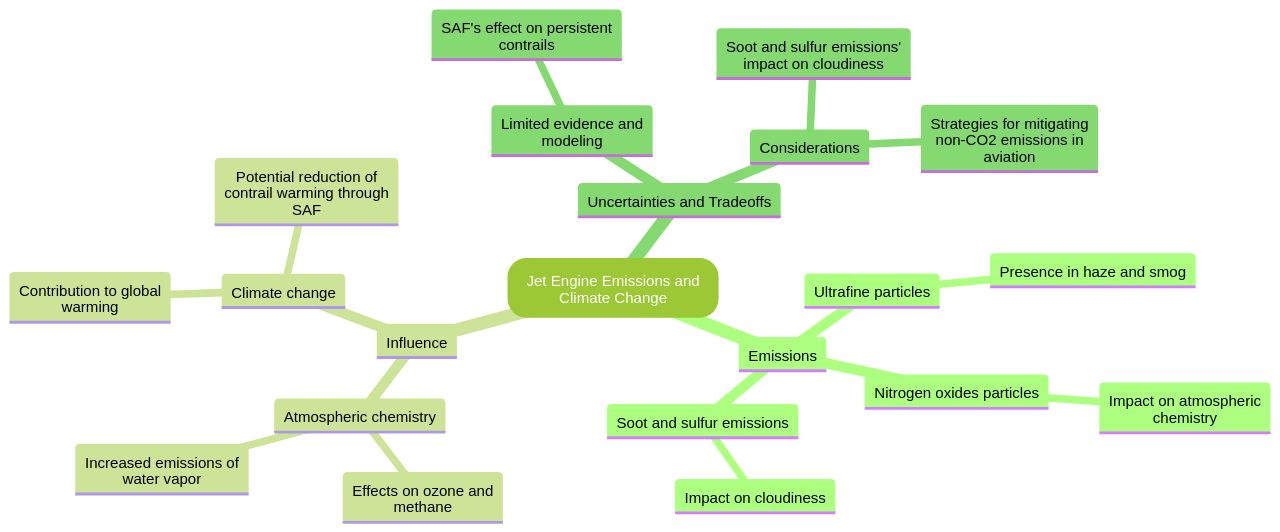
Jet Engine Emissions and Particulate Matter
Jet engine emissions, primarily composed of particulate matter (PM), pose significant environmental and health concerns. PM, which includes microscopic particles such as soot, sulfur compounds, metals, and other organic compounds, can have detrimental effects on both human health and the environment.
The formation of PM is a complex process involving the combustion of fuel and the interaction of exhaust gases with atmospheric compounds. Recent studies have shown that the majority of PM formation occurs during taxiing, with different mass distributions and emission factors noted during taxiing, take-off, and approach phases.
The properties of these soot particles can change due to various factors, including agglomeration, aging, post-oxidation, and interaction with other aerosols. Such changes can significantly impact atmospheric warming.
The aviation industry is actively seeking innovative solutions, such as Sustainable Aviation Fuel (SAF), to mitigate the environmental impact of jet engine emissions. SAF, derived from a variety of non-petroleum sources, has the potential to reduce PM emissions and thereby the climate impact. However, the efficacy of SAF in reducing the climate effect of persistent contrails is still under investigation. The results of these ongoing studies are expected to guide the aviation sector in improving its environmental footprint.
Policy and Investment Needs for Sustainable Jet Fuel
The aviation industry, which accounts for approximately 2-3% of global CO2 emissions, faces the challenge of decarbonization. Sustainable Aviation Fuel (SAF) is considered the main tool for this, although the technology is still in its early stages and its large-scale availability is limited.
Consequently, SAF currently costs 3 to 4 times more than conventional kerosene, which represents a significant barrier to its widespread adoption. Governments, regulatory bodies, and the private sector all have crucial roles to play in overcoming these challenges.
Policies such as blending mandates, tax incentives, and carbon pricing mechanisms can incentivize SAF use, while investments in production facilities and infrastructure can increase capacity and efficiency. Collaboration among these parties, along with research institutions, is critical to accelerate the transition towards a more sustainable aviation sector.
The International Civil Aviation Organization has set an ambitious goal for the industry to achieve net zero carbon emissions by 2050, and SAF is key to reaching this target. In addition to its environmental benefits, the SAF industry could also create employment opportunities. For example, the industry could potentially support up to 153,000 jobs in the United States, with additional jobs created in the broader economy. Therefore, investment in SAF not only contributes to climate progress but also has the potential to revolutionize local industries and contribute to economic growth.
Conclusion
In conclusion, the aviation industry is shifting towards Sustainable Aviation Fuel (SAF) to achieve net-zero emissions by 2050. Despite challenges like infrastructure modifications and blending with traditional jet fuels, SAF is crucial for a sustainable future in aviation.
The Biden administration aims to meet 100% of airline jet fuel consumption with sustainable fuel by 2050. Although SAF currently represents less than 0.2% of global supply and comes at a higher cost, it will play a significant role in reducing carbon emissions.
SAF's compatibility with existing infrastructure makes it promising. However, it should be viewed as a stepping stone towards other net-zero technologies like e-fuels and hydrogen.
Reducing aircraft emissions is vital for both the environment and human health. Air pollution from emissions can harm respiratory and cardiovascular health.
Improving air quality around airports protects aircrew, passengers, and communities. To achieve widespread SAF adoption, supportive policies like blending mandates and tax incentives are needed. Investments in production facilities and infrastructure will increase capacity and efficiency. In summary, the aviation industry recognizes the importance of transitioning to SAF for sustainability. By investing in production facilities, implementing supportive policies, and collaborating between stakeholders, we can create a more sustainable future in aviation.




